A Point of View: Does screen violence make society more violent?
- Published
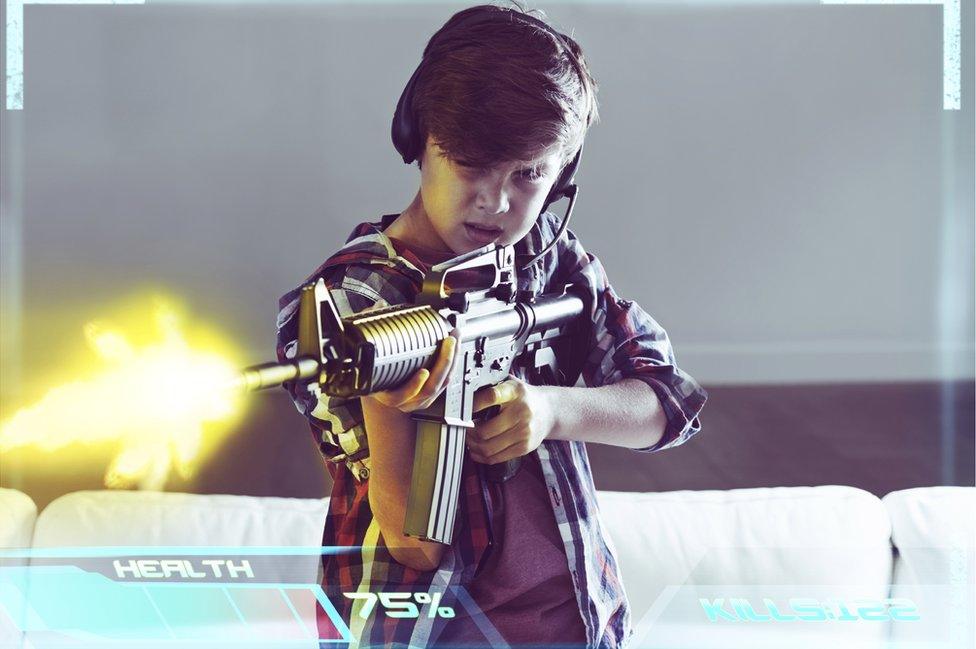
Moviemakers excel at recreating violence and gore on screen. But Will Self asks if we should view fictional violence with more caution.
I can't look at representations of violence on the television or on film anymore. When I was younger I equated viewing such things (and viewing actors performing sexual acts) with some sort of liberty - an existential freedom to be the virile fellow I felt myself to be, and a universal freedom to witness human expression in all its polymorphous perversity. But with age - and possibly, I concede, declining virility - I began to see that pornography entailed the exploitation of vulnerable and mostly young people, while the depictions of violence which bedizen our ubiquitous screens aren't victimless crimes - no matter how enthusiastically those who stage them, may consent.

Tim Roth and Harvey Keitel in the blood-soaked film Reservoir Dogs
A few years ago Stephen Pinker published a book in which he set out to show that the venerable Dr Pangloss (a character in Voltaire's Candide) was in fact completely right - we are living in the best of possible worlds, while every day, and in every way, things can only get better. I'm not in a position to assess the statistical basis of Pinker's argument - only an omniscient god could be, and perhaps that's his covert point - but even if it were the case, as he avers, that interpersonal violence has declined globally over the centuries, while in the West it's dipped still more precipitately, this doesn't, in my view, give us any great reason for optimism.
Arguments about what witnessing on-screen violence does to us - or, conceivably, what it does for us - can grow so aerated that they become, um, violent. This in itself suggests something very primal indeed is going on when we witness a man, rendered in beautiful, crystal-clear close up, slowly having his throat cut.
Shortly after Pinker's prolegomenon to peace-without-end was published I went to see the premiere of a feature film that had been directed by friend of mine from a script by another friend. It's a pretty gory film with shootings and stabbings aplenty, but undoubtedly the violent piece de resistance was the throat-slitting. I looked away, but it went on for a while - and later, to my astonishment, I heard that my friends had semi-fallen out over the cutting of the cutting. Apparently the screenwriter objected, um, violently, to the director - at the behest of the producer - reducing the throat-slitting sequence by some 20 seconds.
What struck me as so bizarre about this is that both these men are gentle souls who, were they to be faced by actual fisticuffs would probably run a mile in the opposite direction. And yet here they were judging their artistic "integrity" by their willingness - or not - graphically to simulate murder. Of course, the idea that witnessing such stagings induces their viewers to behave in a similar fashion, has been around since the dawn of humanity. No doubt some cavilling Cro-Magnon objected to his fellows' enthusiastic recounting of his killing a Neanderthal on the grounds that it would cause more bloodshed - and each new medium, able to portray violence with greater fidelity, gives rise to the same moral panic.
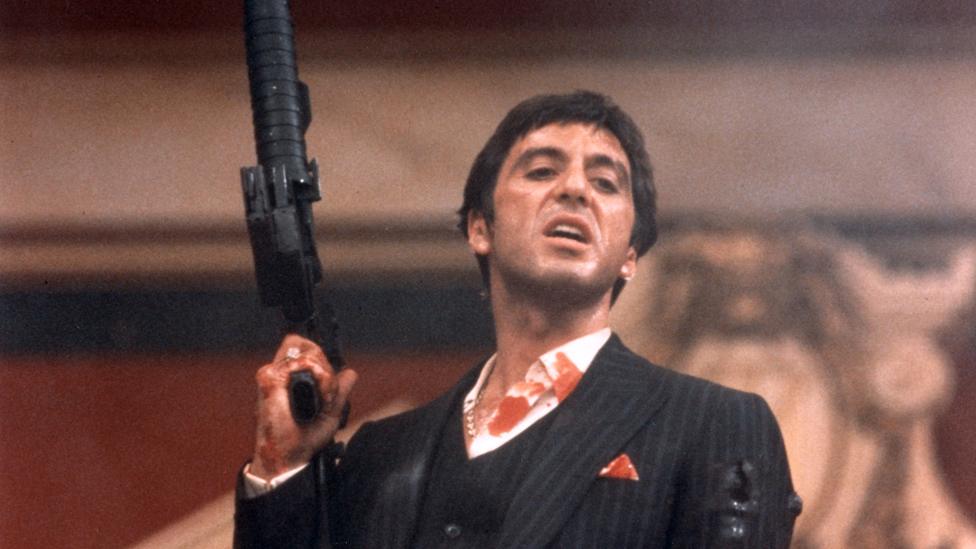
Al Pacino in Scarface (1983)
But I don't think watching violence drives us to commit violent acts - I think it is a violent action in and of itself. Moreover, as the mimetic death toll inexorably rises, so it begins directly to affect the real one. Let me explain by way of example - towards the end of 2014 the terrorist group calling itself the Islamic State began to upload videos of hostage beheadings to the web. I'm not disputing that these were videos of actual beheadings, although it's notable that they actually used basic film-editing techniques to give this impression, rather than showing the entire grisly act with the sort of protracted, locked-off shot my cineaste friends would favour. But it wasn't the actual killings which galvanised popular opinion in the West − it was their virtual representation.
And understandably so - after all, we've come to view sharing imagery of one sort or another as integral to our social existence. Nowadays we know our lives are worth living precisely because they're readily available to be examined by anyone with a computer. To find videos of beheadings interleaved with those of weddings, bar mitzvahs and retirement parties induces in us a sort of cosmic queasiness - either the events of our own lives have little substantive reality, or these outrages must be taking place right here and right now.
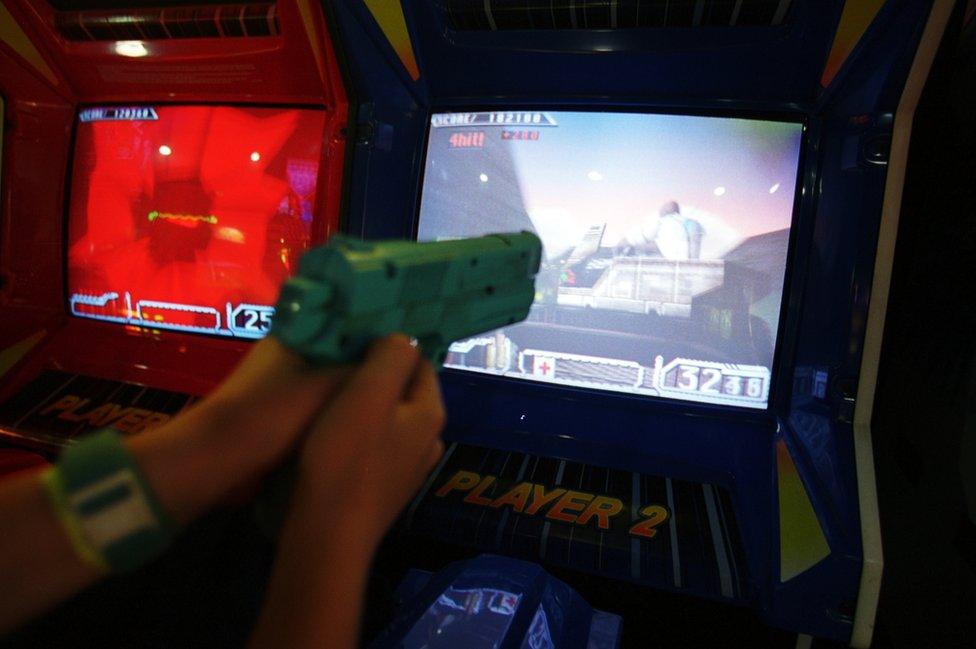
How else can we explain the reactions of our political class, who increasingly cast realpolitik aside when it comes to state-sanctioned violence, in favour of raw emotion? Interviewed at the time, the then Defence Secretary Philip Hammond was asked what his reaction was to the videos (not, you note, to the beheadings themselves - but to their cinematic depiction.) He replied that Her Majesty's Government was so concerned a decision had been taken to build a new naval base in Bahrain, which would represent a 20-year commitment to British involvement in the Middle East.
Now, you may argue that I'm splitting hairs. Clearly Hammond was responding to the threat represented by the video-makers, not the videos themselves. And anyway, even if this was an instance of policy being made on the hoof by politicians caught up in a stampede of public opinion, what's new? Just as the new digital media have been able to depict violent acts more realistically, so they've also been able to galvanise mass sentiment more effectively. But the IS beheading videos represent, in my view, not simply a difference in degree, but also one of kind. We can define a virtual object, in distinction to a real one, as a mental object which is commonly perceived − but what happens when mental objects are more frequently and more commonly perceived than actual physical ones?
The boosters of the digital revolution see such a phenomenon as wholly benign - this is the "global village" that the communications seer Marshall McLuhan promised us half a century ago, a playful realm in which the world's multitudes can achieve a strange, mass-intimacy in virtual space. McLuhan, a devout Catholic, saw the inception of what he termed "the unified electrical field" − the web lay 30 years in the future − as the beginning of God's rule on earth. But to my way of thinking, techno-prophets such as Ray Kurzweil of Google, who believe humankind will be uploaded to the web, are singing from the same hymn sheet. Moreover, I don't believe the effects of this on the human mind lie in the distant − or even near − future. They're already upon us.

"You know nothing of my work" - Marshall McLuhan

Canadian academic, media expert and public intellectual Marshall McLuhan coined the phrases "global village", "the medium is the message" and "turn on, tune in, drop out"
He started his career as a Professor of English in the US and Canada before becoming a philosopher of communication technology based at the University of Toronto
His term "global village" describes how electronic technology has shrunk the globe into a village in which information can be moved instantaneously
In "The Gutenberg Galaxy: The Making of Typographic Man", McLuhan predicted the World Wide Web - nearly 30 years before it was invented
McLuhan makes a cameo appearance in Woody Allen's "Annie Hall" - appearing unexpectedly in a New York cinema lobby he confronts a fellow academic with his much-used line: "You know nothing of my work".

Plenty of doomsters worry about the impact of digital media on our cognitive function, but I think this is nonsense − however plastic the brain may be, it takes many millennia for its gross anatomy to evolve. But the human mind and the human persona are both shape-shifters par excellence, well capable of believing in almost anything, while accommodating to the most twisted of realities.
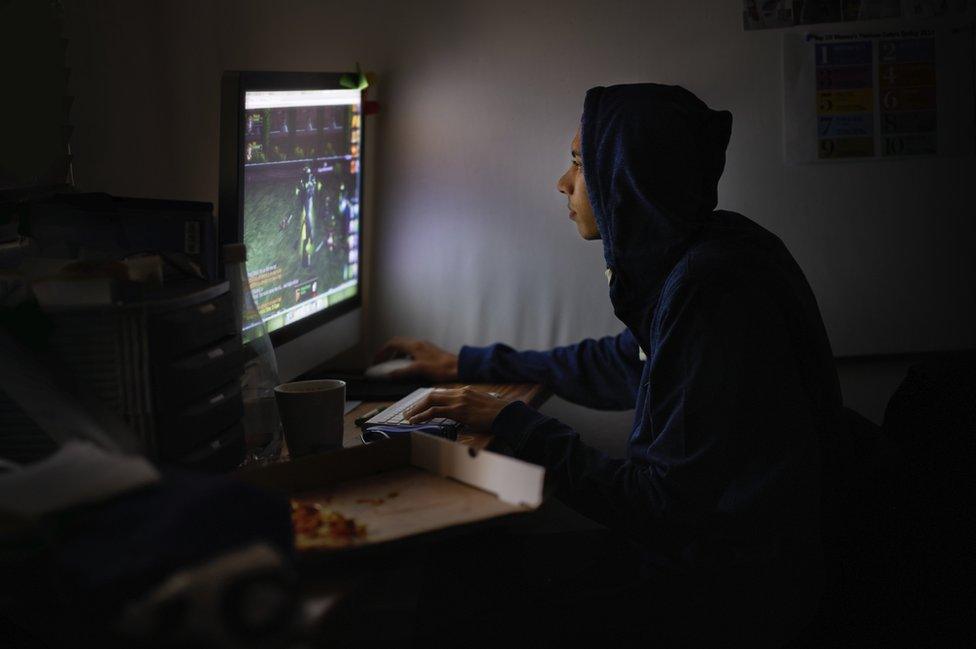
It's one thing for a teenager to sit alone in his bedroom blasting away at virtual enemies, but quite another for millions, if not billions, of us to simultaneously experience an alternate reality − one that may, soon enough, achieve that quality heretofore known as verisimilitude, but which, in the not-so-distant future, when those millions are equipped with the virtual reality headsets due for release this year, may be called simply be called, how it is.
The argument that watching on-screen violence − and even perpetrating it − is a cathartic act, which leads, in part, to the decrease in actual violence Pinker is so keen to establish, may have some force in a world in which people spend the majority of their time physically interacting, but in an era when these interactions are dwindling away, being violent in virtual space becomes, quite simply, being violent. And since people's appetite for such violence shows no sign of decreasing at all, we can only surmise that humans are innately so − a hypothesis which I suspect can be amply confirmed simply by depriving these homicidal fantasists of their window into this brave new world.

More from the Magazine
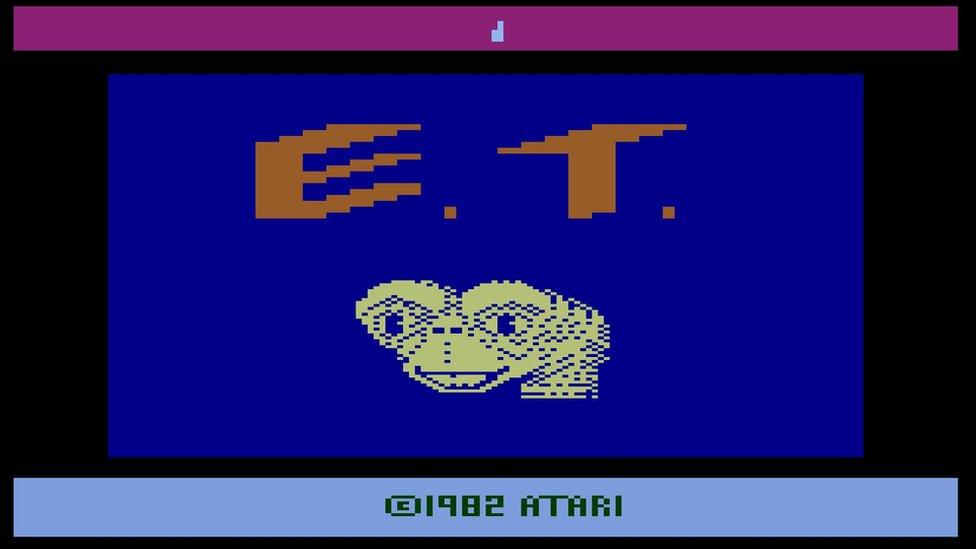
The video game of Steven Spielberg's ET is considered to be one of the worst of all time and has even been blamed for triggering the collapse of Atari. Richard Hooper finds out why such a high-profile game was rushed out in a matter of weeks.
The man who made 'the worst video game in history' (Feb 2016)

This is an edited transcript of A Point of View, broadcast on Friday on Radio 4 at 20:50 BST and repeated on Sunday at 08:50 BST. Catch up on BBC iPlayer
Subscribe to the BBC News Magazine's email newsletter to get articles sent to your inbox.